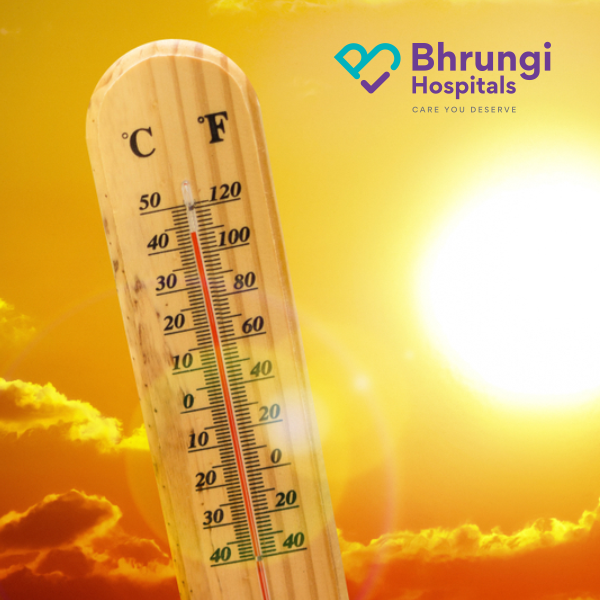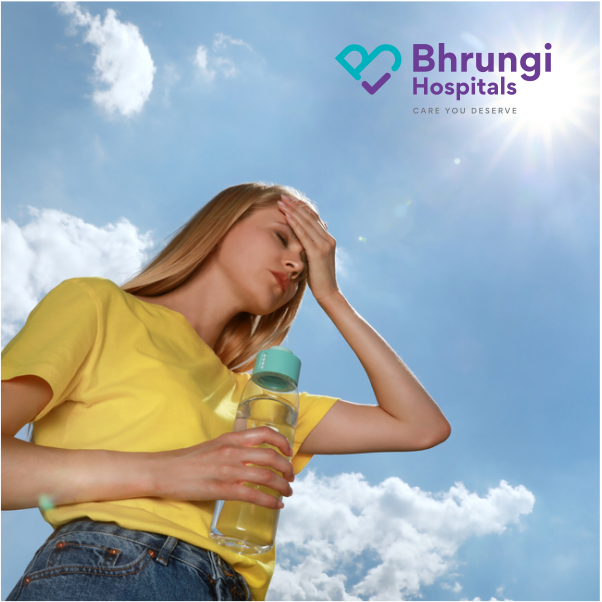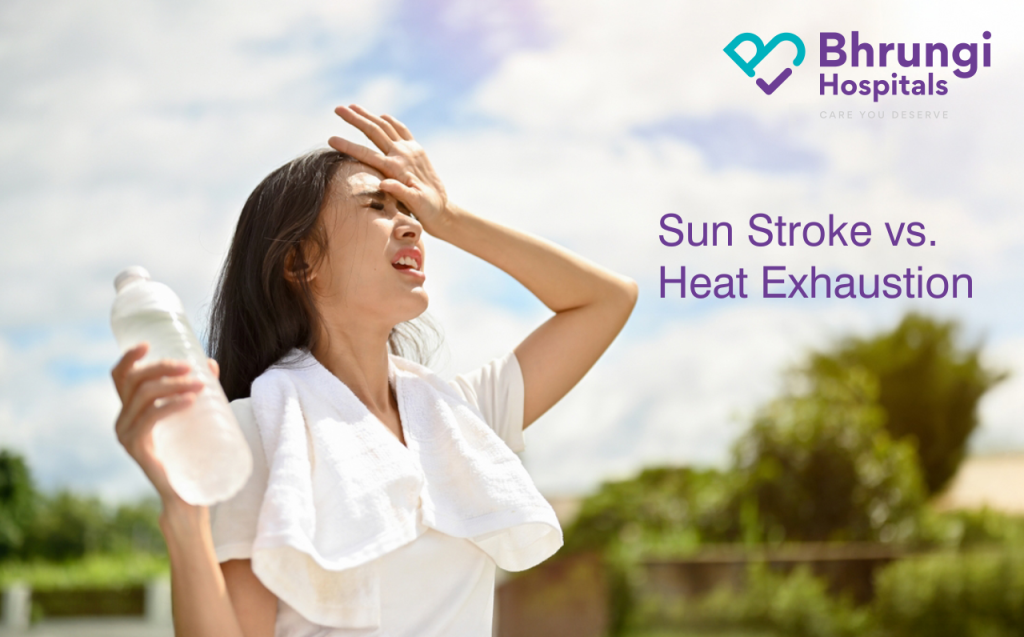
The scorching summer sun can be relentless. While we all enjoy the warmth, it’s crucial to be aware of the fact that as temperatures soar, the risk of heat-related illnesses like sunstroke and heat exhaustion rises sharply. Two common heat-related illnesses, sunstroke and heat exhaustion, often get confused. Though both are serious conditions caused by prolonged exposure to high temperatures and excessive physical exertion in the heat, they are not the same. In this blog we shall understand the vital difference for timely intervention, and to help you respond appropriately and stay safe during the hot months.

Heat Exhaustion: Your Body’s Warning Signal
Heat exhaustion is the body’s response to an excessive loss of water and salt, usually through sweating, and the body struggles to regulate its temperature. It is more common in people who are outdoors for long hours — such as construction workers, athletes, or even children playing in the sun. Strenuous activity in hot and humid conditions or simply prolonged exposure to high temperatures without adequate hydration causes heat exhaustion. If not addressed in time, heat exhaustion can progress to the more severe condition: sunstroke.

What are the symptoms of heat exhaustion?
You might experience a range of signs, including:
- Heavy sweating
- Pale, cold and clammy skin
- Fatigue and weakness
- Dizziness or light-headedness
- Headache
- Nausea or vomiting
- Rapid, weak pulse
- Muscle cramps
What to do:
If someone is showing signs of heat exhaustion, it’s crucial to act quickly:
- Move them to a cooler, shaded place or an air-conditioned room.
- Encourage them to drink cool water or oral rehydration solutions (ORS).
- Loosen their clothing.
- Apply cool, wet cloth or sponge their body with water.
If the symptoms do not improve within 30 minutes, seek medical help immediately.
Sunstroke (Heatstroke): A Medical Emergency

Sunstroke, also known as heatstroke, is a severe condition that occurs when your body’s temperature regulation system fails. Your body temperature can rise dangerously high, often reaching 104°F (40°C) or higher. This condition can damage vital organs — including the brain — and can be fatal if not treated promptly.
What are the symptoms of sunstroke?
The signs are more severe and can include:
- High body temperature (104°F or higher)
- Hot, red, dry skin
- Absence of sweating
- Rapid, strong pulse
- Throbbing headache
- Dizziness or confusion
- Seizures
- Loss of consciousness
- Slurred speech
What to do:
If you suspect someone has sunstroke:
- Call emergency services or take them to the nearest hospital immediately.
- Move them to a shaded or cool area.
- Remove excess clothing.
- Try to cool them down rapidly with cold water, ice packs, or fanning.
- Avoid giving fluids if the person is unconscious or not fully alert.
Tips for Staying Safe Under the Scorching Sun
Prevention is always better than cure. Here are some essential tips to stay safe and avoid heat-related illnesses this summer:

- Hydrate Diligently: Drink plenty of fluids throughout the day, even if you don’t feel thirsty. Water is best, but electrolyte-rich drinks can also be helpful, especially during intense activity. Avoid sugary drinks and alcohol, as they can dehydrate you.
- Dress Appropriately: Wear light-colored, loose-fitting, and breathable clothing. Opt for natural fabrics like cotton.
- Seek Shade: Limit your exposure to direct sunlight, especially during the hottest parts of the day (typically between 10 am and 4 pm). Seek shade under trees, umbrellas, or in air-conditioned spaces.
- Limit Outdoor Activity: If you’re engaging in outdoor activities, take frequent breaks in cool, shaded areas. Avoid strenuous activities during peak heat hours.
- Protect Yourself: Wear a wide-brimmed hat and sunglasses to shield yourself from the sun. Apply sunscreen with a high SPF to protect your skin.

- Be Mindful of Others: Keep an eye on vulnerable individuals like young children, the elderly, and those with chronic illnesses, as they are more susceptible to heat-related illnesses. Never leave anyone in a parked car.
If you or someone you know shows signs of heat-related distress that don’t resolve with basic cooling and hydration, don’t delay — visit the nearest hospital. Early treatment can prevent complications and save lives.
At Bhrungi Hospitals, our emergency team is equipped 24/7 to manage all heat-related emergencies swiftly and effectively.
Bhrungi Hospital- Providing you Comprehensive and Coordinated Care That You Deserve
With a focus on holistic recovery, Bhrungi Hospital stands as a leader in high-quality emergency and critical care services in a patient-centered setting. Our integrated approach combines expertise, advanced technology, and compassionate care, focusing on safety and transparency while remaining affordable and accessible to all patients in need.
- ACLS Ambulance with free service within 10KMs radius
- Ventilator Ambulance service available
- Call +91 7845 108 108 anytime, any day
- 100+Beds Multispecialty Hospital
- 24×7 Emergency Care






